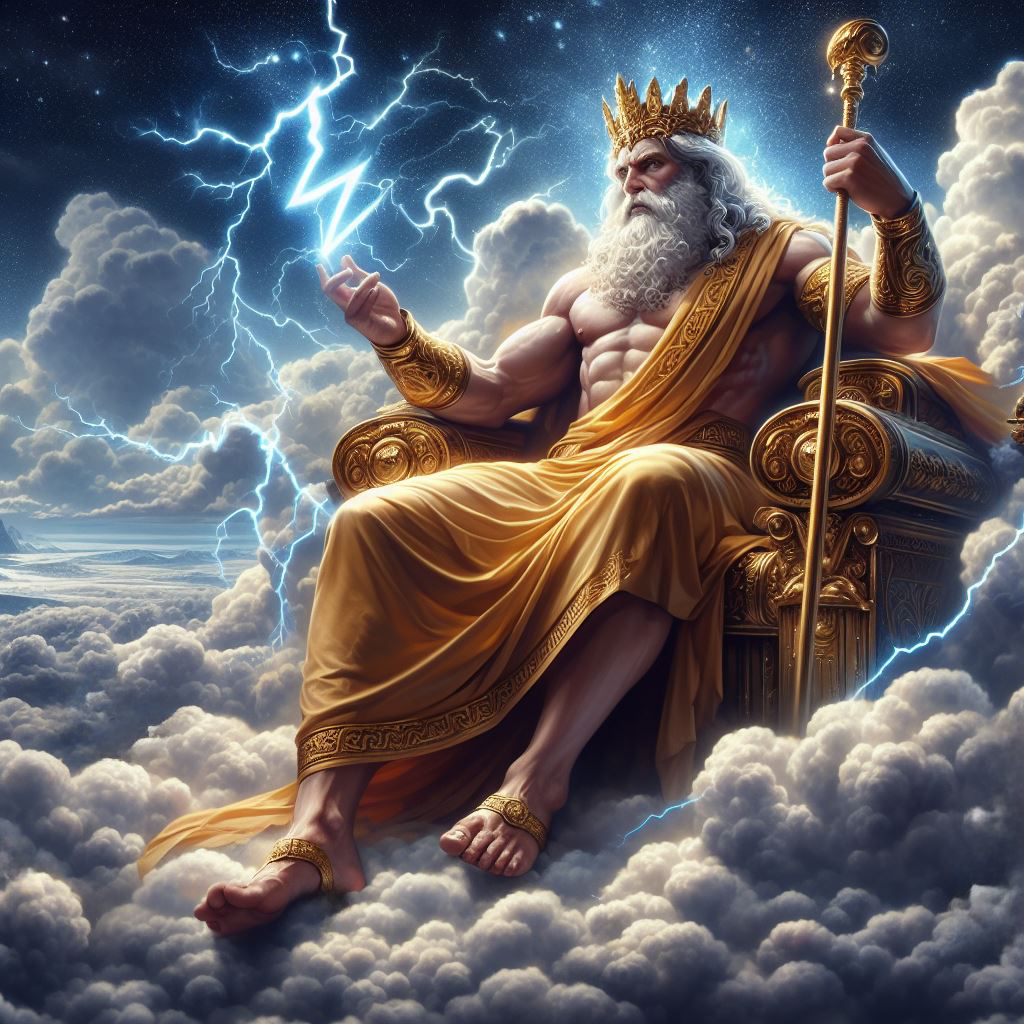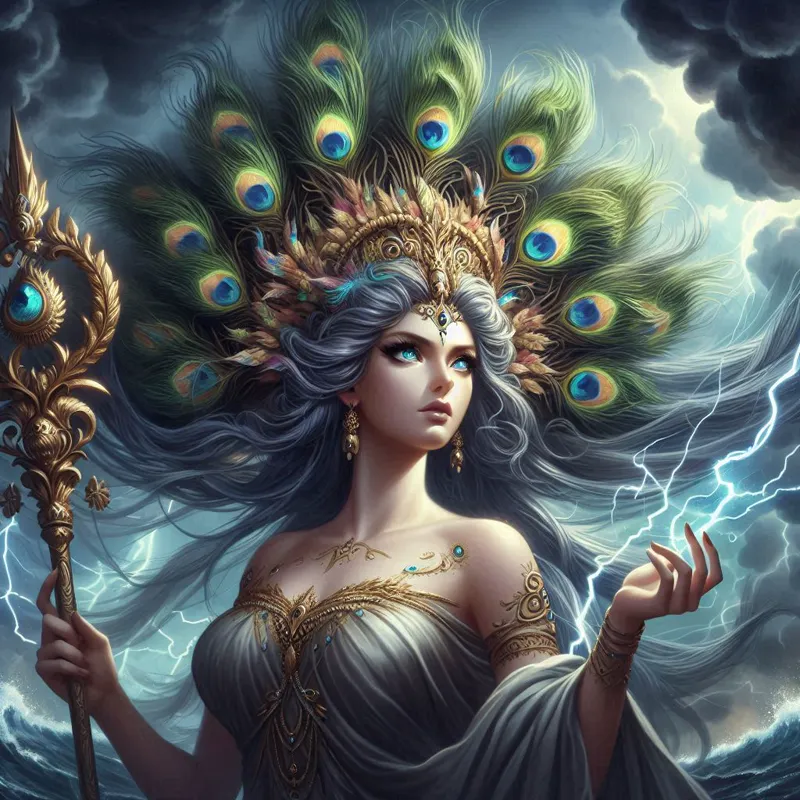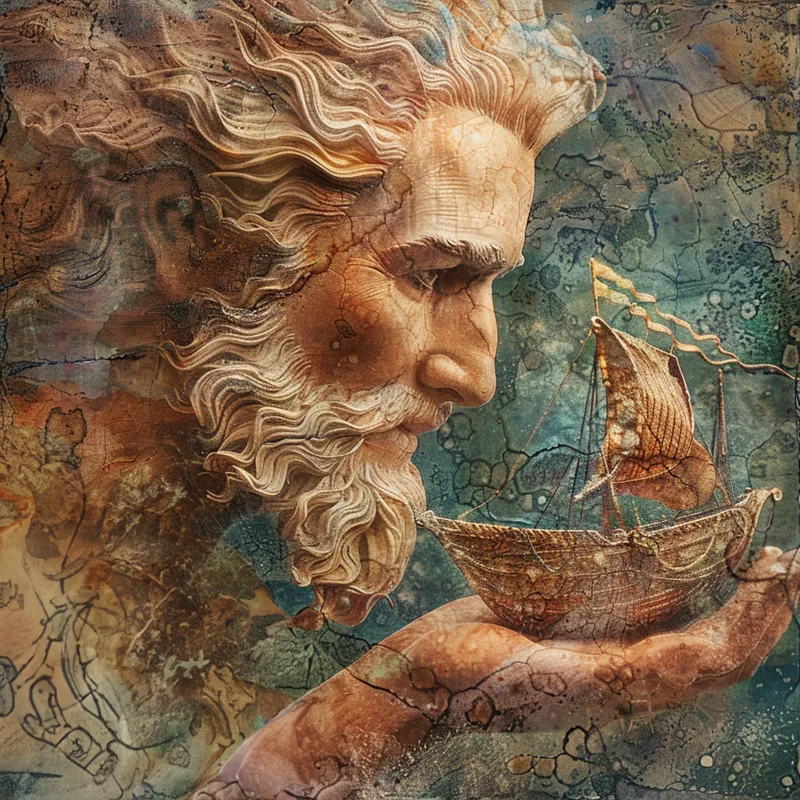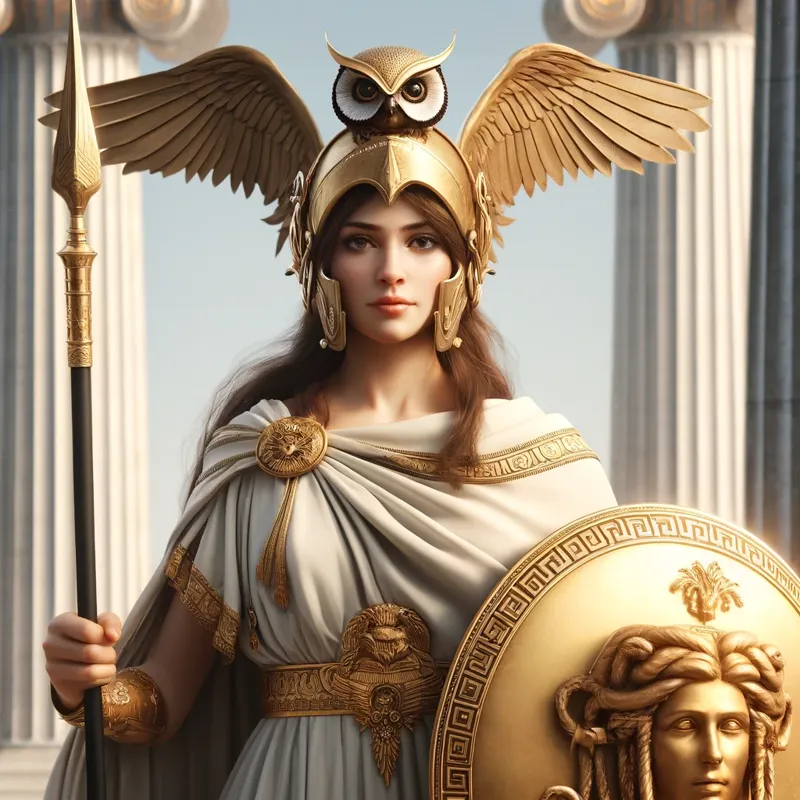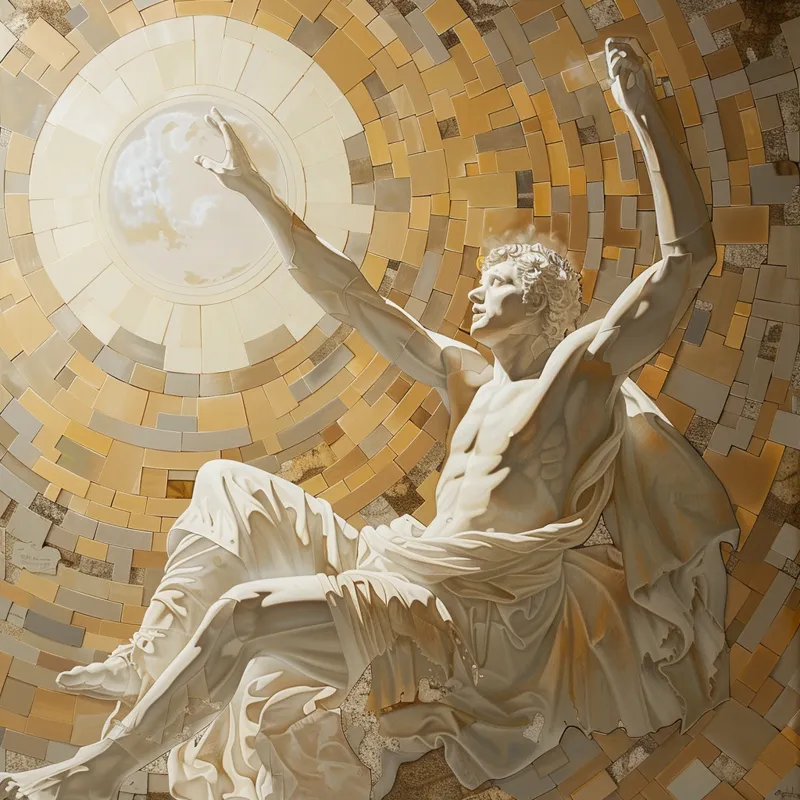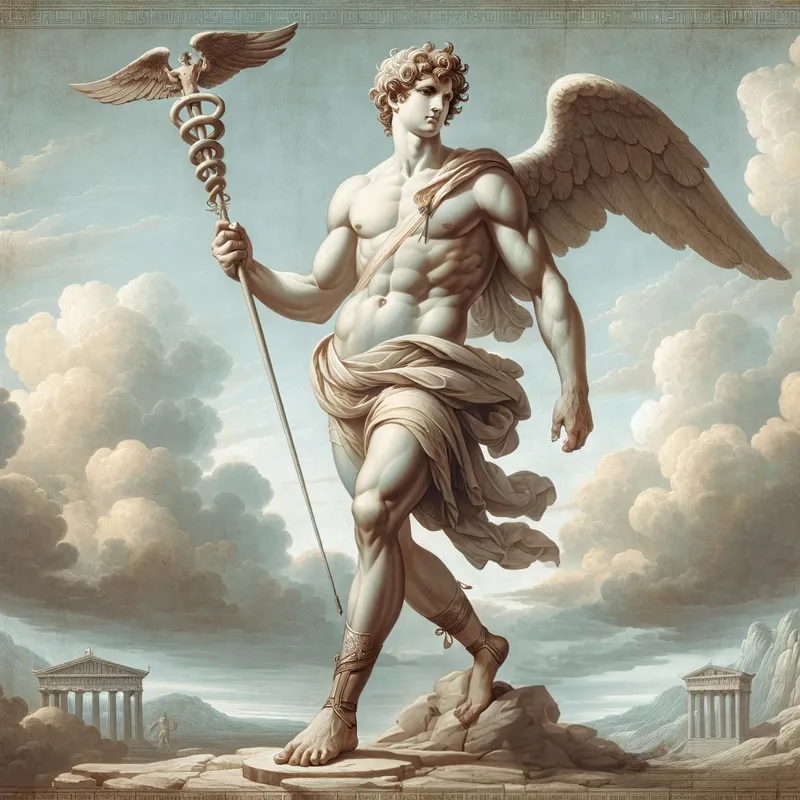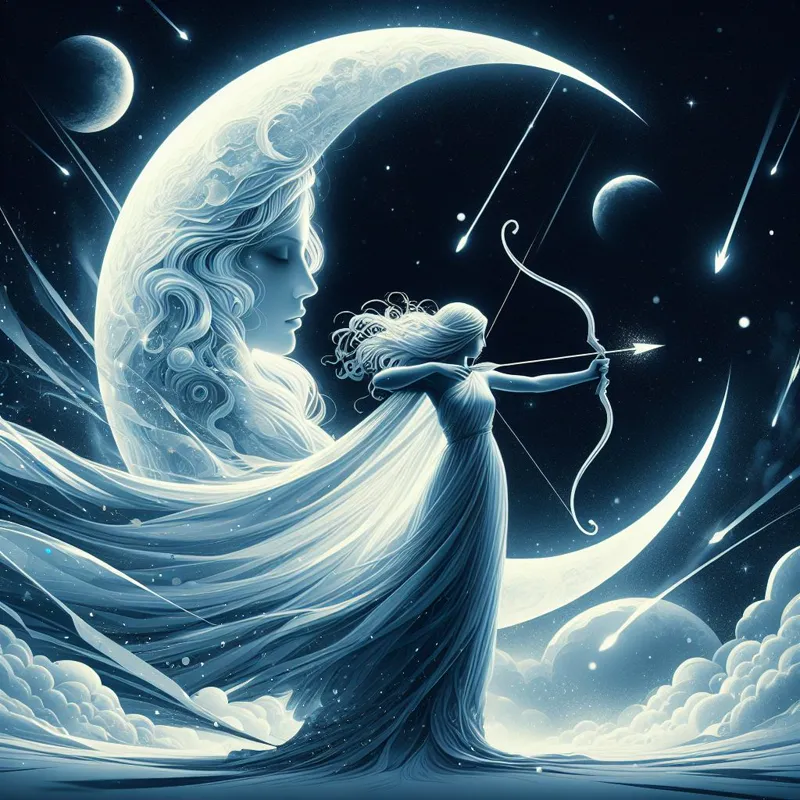
Without sin
Artemis, one of the most venerated deities of ancient Greek mythology, is a figure of immense complexity and significance. Often depicted as the virgin huntress, she is the goddess of the wilderness, wild animals, chastity, and childbirth. Her mythology reveals a deity with a multifaceted nature, embodying both nurturing and ferocious aspects.
As a daughter of Zeus and Leto, and twin sister to Apollo, Artemis occupies a crucial position in the Olympian pantheon. Her worship was widespread across the Greek world, and she was often associated with the moon and nature, illustrating her deep connections with the elemental forces of the world.
Origins and Family
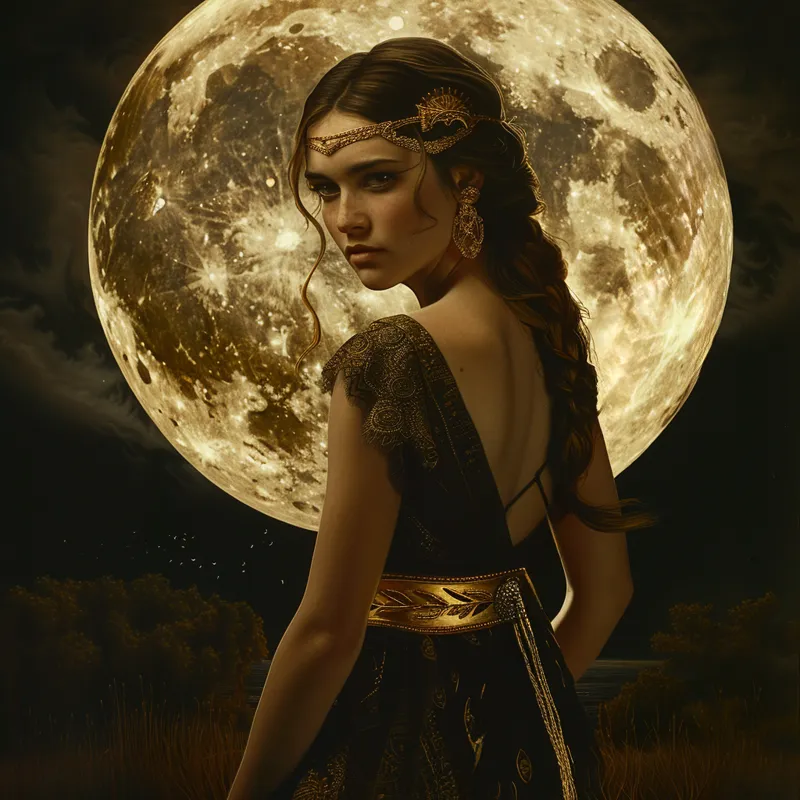
Strength of promises
Artemis' birth story is a testament to her mother's resilience and Artemis' own fierce nature. Leto, her mother, was persecuted by Hera, Zeus' wife, but found refuge on the island of Delos to give birth to Artemis and her twin brother, Apollo. Artemis was said to have been born first, assisting her mother in the birth of Apollo, showcasing her precocious nature and association with childbirth and protection.

Hold you to your word
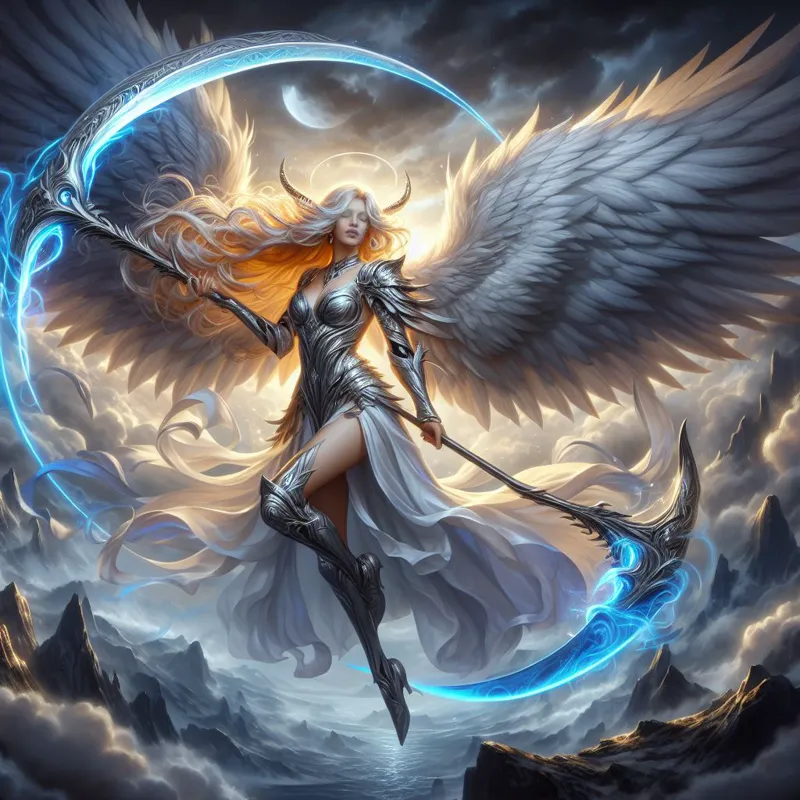
Honor and judgement
Her family ties are central to many myths, highlighting her relationships and interactions with other gods and goddesses. Despite her virgin status, Artemis was deeply involved in the lives of her family, defending them fiercely and sometimes exacting revenge on those who wronged them. Her twin brother, Apollo, was often her companion in adventures and battles, illustrating a powerful sibling bond.

True shot
Attributes and Symbols

Positive and negative
Artemis is commonly depicted with a bow and arrows, signifying her role as a huntress and protector of the wild. The deer, bear, and cypress tree are sacred to her, reflecting her connection to nature and wild animals. She was also often shown accompanied by a pack of hunting dogs, emphasizing her dominion over the wilderness and her role as a guardian of animals.

A shared dream
Her symbols also include the crescent moon, which aligns her with the lunar cycle and femininity. The moon's phases symbolized the cycle of life and death, a theme deeply ingrained in Artemis' worship. This celestial association portrays her as a luminous and untouchable deity, governing the night and illuminating the darkness.
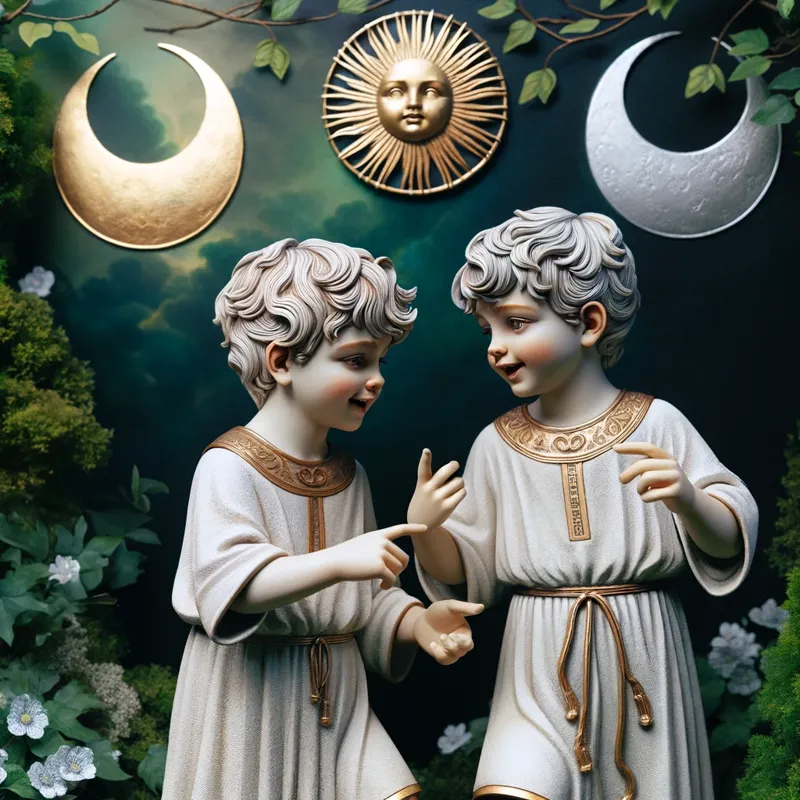
Mirror image
Worship and Cult
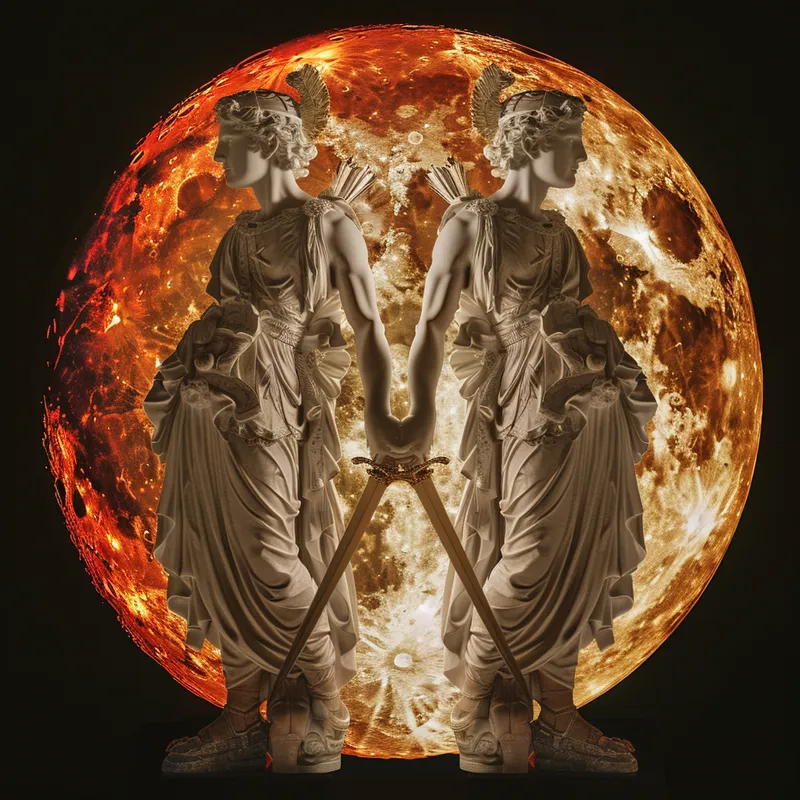
Instability
Artemis was worshipped across the Greek world, with each region having its unique version of the goddess. Her cult was particularly strong in areas like Ephesus, where the Temple of Artemis, one of the Seven Wonders of the Ancient World, stood as a monumental testament to her significance. Her festivals, such as the Brauronia, held in Brauron, involved rites of passage for young girls, signifying her role in the transition from childhood to adulthood.

Compliment
Her worship often involved rituals and sacrifices to appease and honor her, reflecting her dual nature as both a nurturer and a destroyer. Virginity and chastity were central themes in her cult, with her priestesses often taking vows of celibacy in her honor. Artemis' festivals were occasions for communal gathering, celebrating her protection and nurturing, as well as her fierce and untamed aspects.
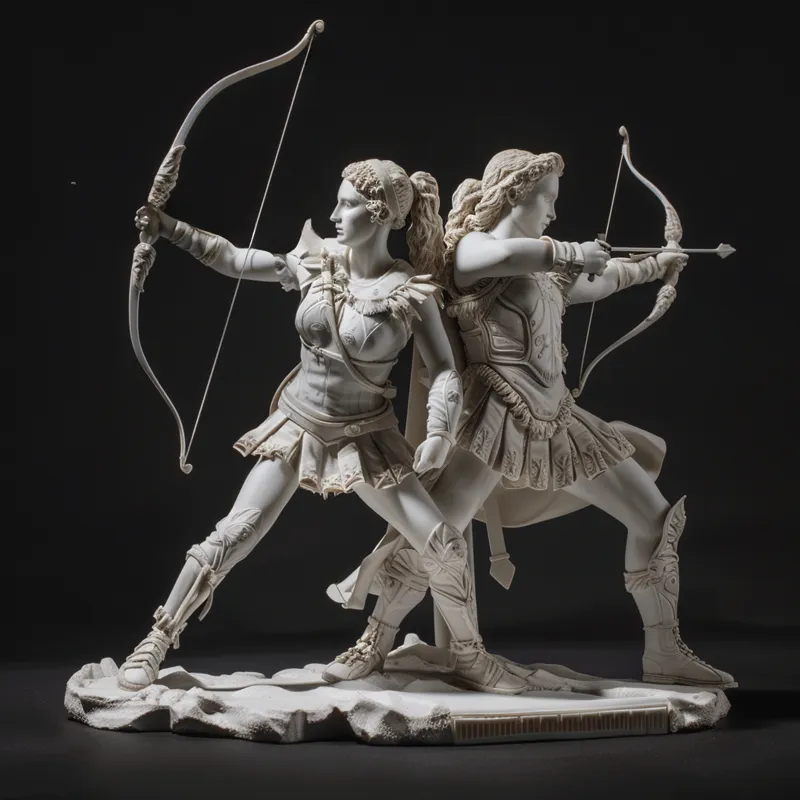
Two minds are better than one
Mythology and Legends
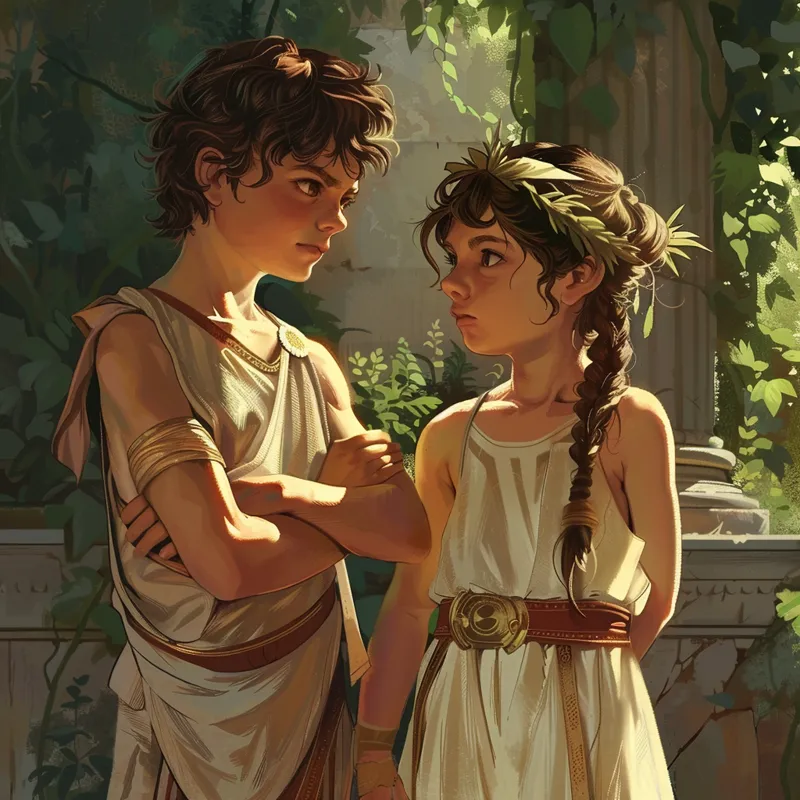
- Where is it? - I don't know what you're talking about
Artemis' mythology is filled with tales of strength, protection, and swift retribution. One of the most famous legends is the story of Actaeon, a mortal who accidentally saw Artemis bathing. In her wrath, she transformed him into a stag, and he was subsequently killed by his hunting dogs. This story highlights her protective nature and her fierce defense of her privacy and chastity.
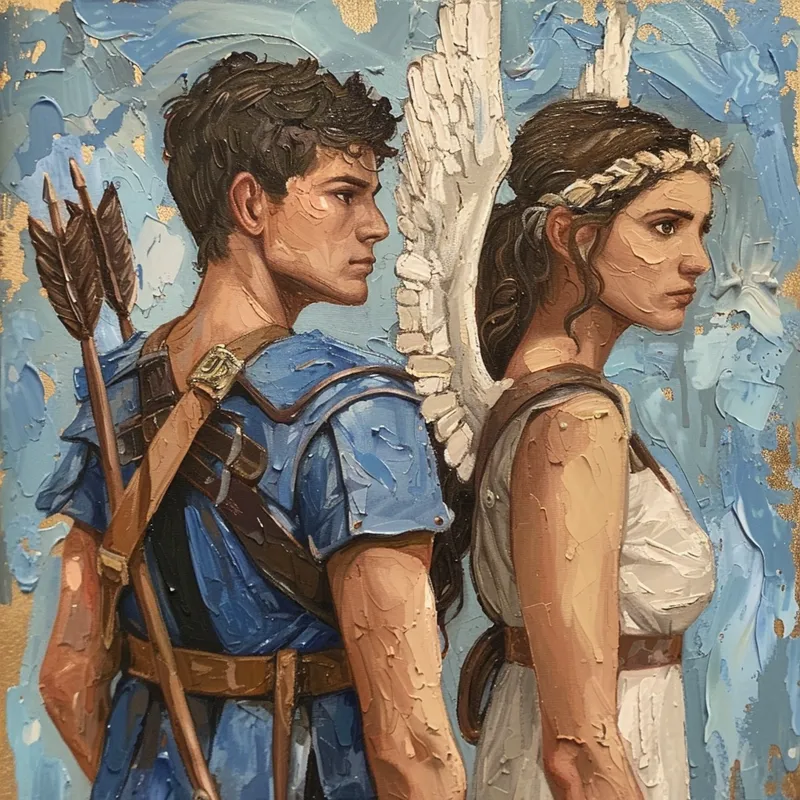
- What do you see? - I don't know yet
Another significant legend involves the giant Orion, a companion of Artemis, whom she accidentally killed or was tricked into killing. The myths vary, but they often reflect themes of loyalty, friendship, and the tragic consequences of misunderstandings or divine interference. These stories underscore her complex character, capable of deep bonds yet also of swift and deadly justice.
Artemis in Art and Literature
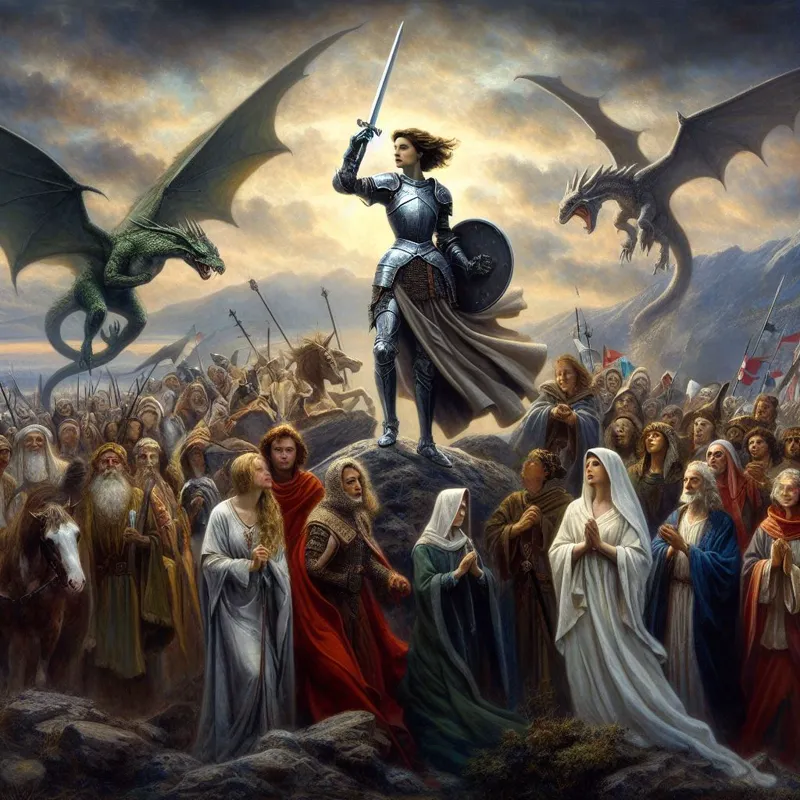
Vision without parallel
In art and literature, Artemis is often depicted as a young, robust maiden with hunting attire, symbolizing her virginity and her role as a protector and hunter. Ancient sculptures and paintings show her with a bow and quiver, often in the company of animals, highlighting her connection to the natural world and her mastery over it.
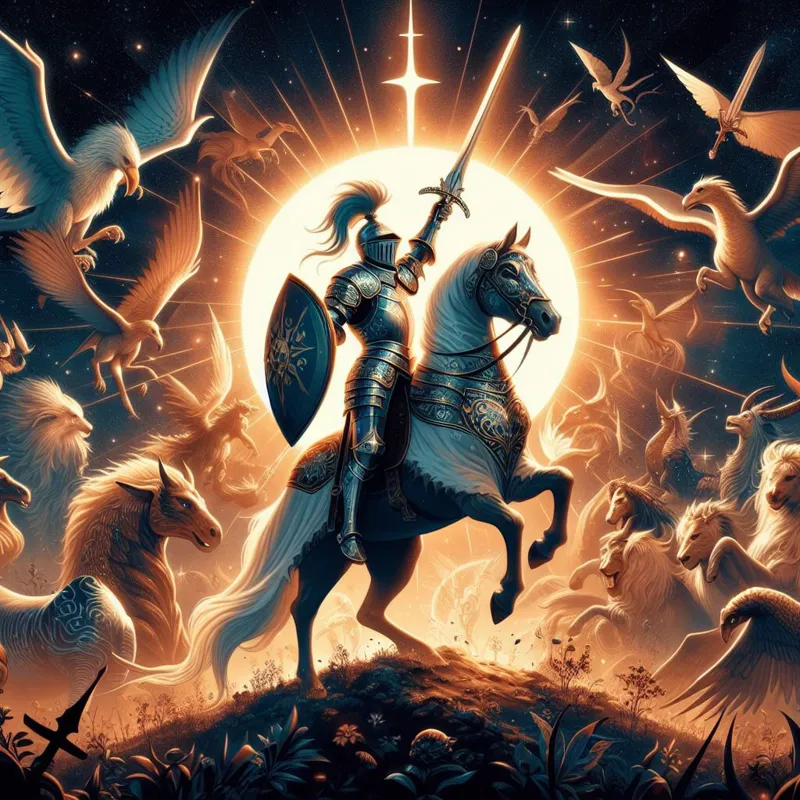
Terra firma
In literature, from ancient texts to modern works, Artemis is portrayed as a powerful and autonomous figure, often serving as a symbol of purity, independence, and the untamed forces of nature. Her character has been explored in various contexts, reflecting her enduring appeal and the multifaceted aspects of her persona.
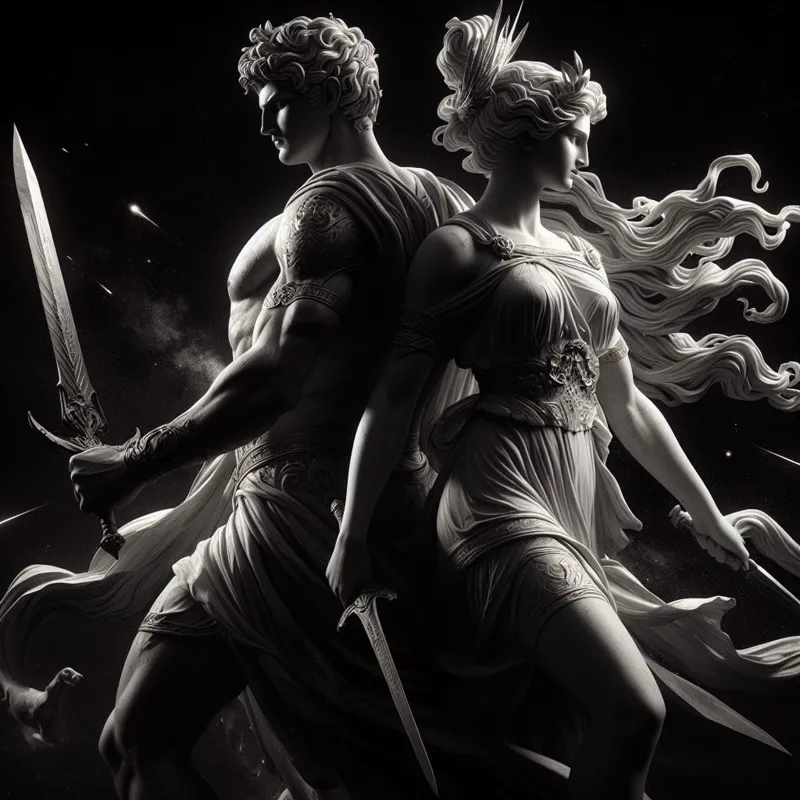
- My shadow - My shadow
Role in the Pantheon
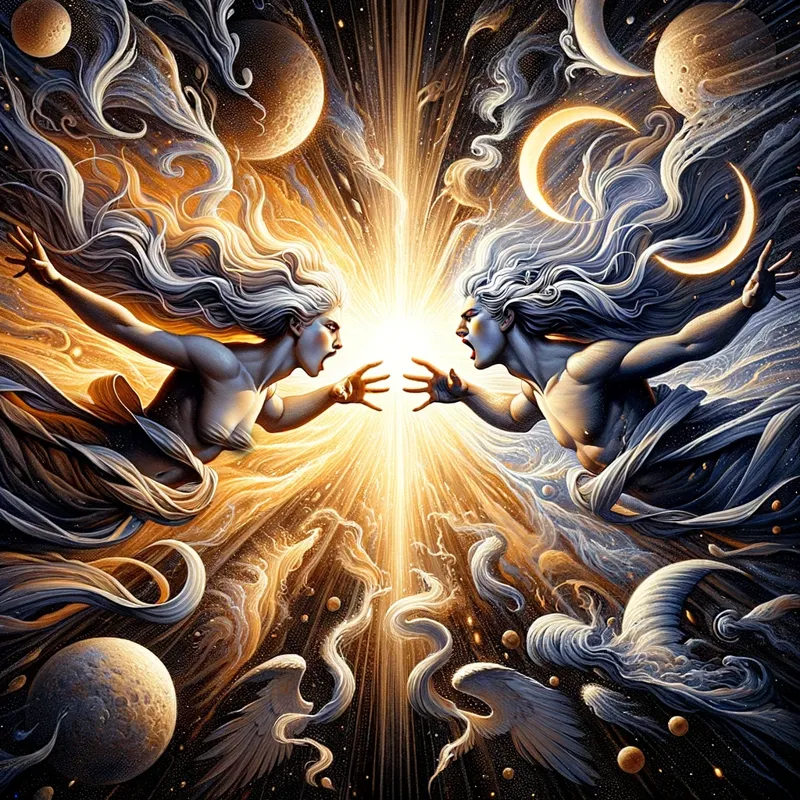
Ultima
Within the Olympian pantheon, Artemis held a unique place. She was one of the few deities who retained her independence, refusing marriage and maintaining her virginity. Her role extended beyond the wilderness and hunting; she was also a goddess of childbirth and protector of the young, indicating her broad domain and influence.
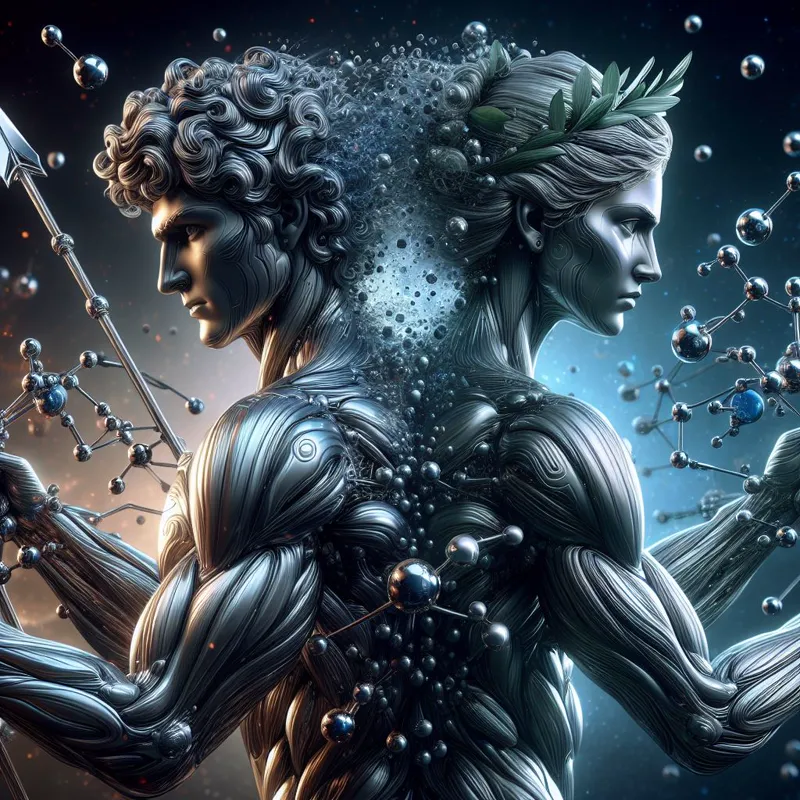
In a world of lies...
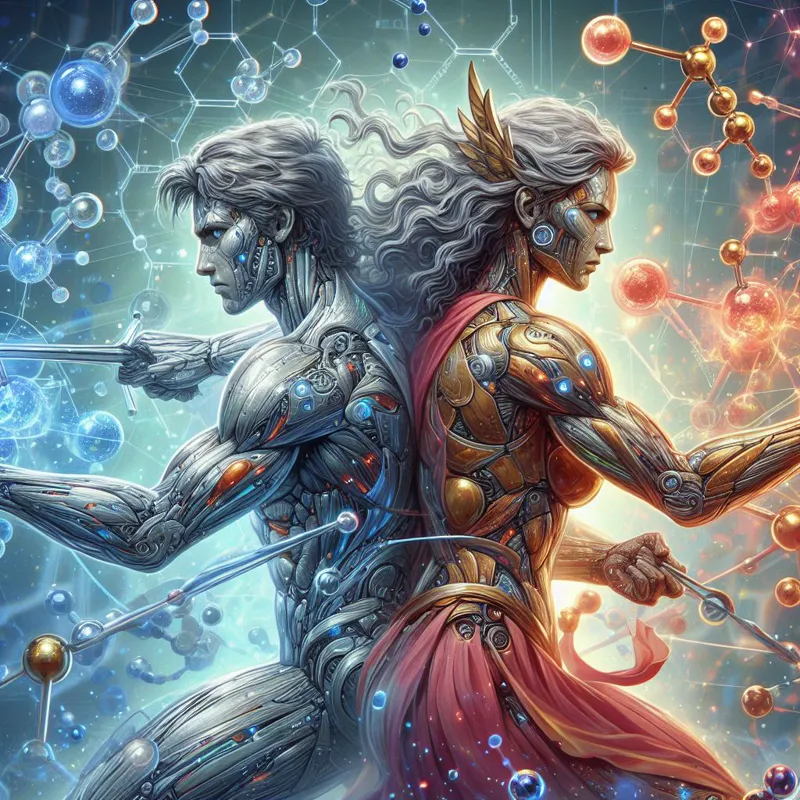
...how can we see the truth?
Her relationships with other gods were complex. While she was closely aligned with her twin, Apollo, she also had contentions with gods like Hera and was involved in various divine conflicts and resolutions. Her independence and strength made her a respected figure among both gods and mortals, embodying the wild and free aspects of the world.
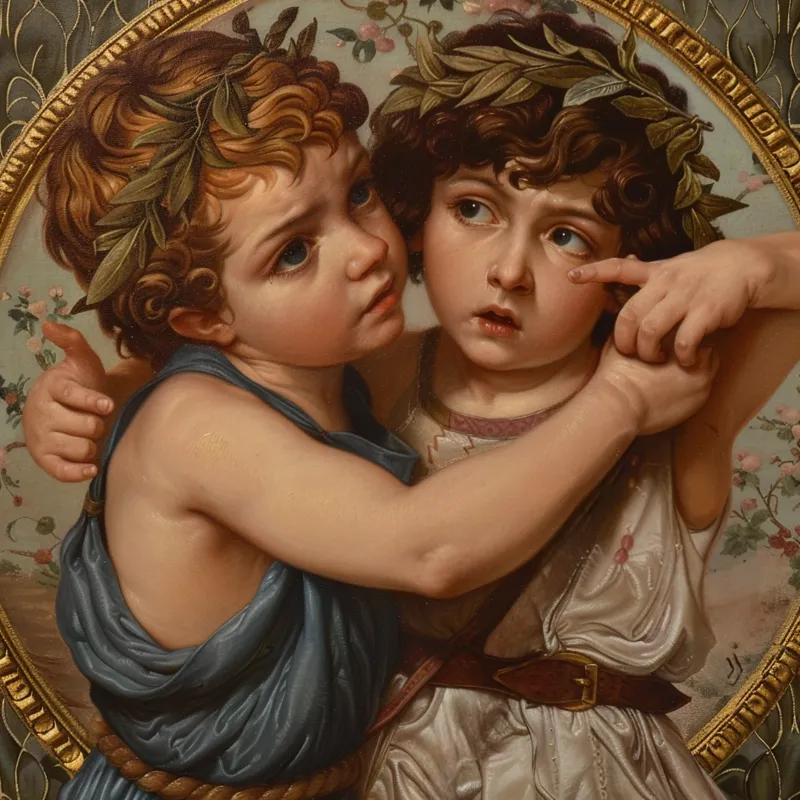
- Get your finger out my face! - That's your finger!
Artemis, with her diverse roles and attributes, remains a captivating figure in ancient mythology. Her legacy as the virgin huntress, protector of the wild, and fierce deity continues to resonate in modern interpretations of Greek mythology. Artemis symbolizes the untamed and pristine aspects of the natural world, reminding us of the primal forces that govern life and death. Her enduring appeal lies in her complexity and contradictions – a goddess of wilderness and civilization, nurturing yet fierce, and always embodying the independence and strength that define her.


